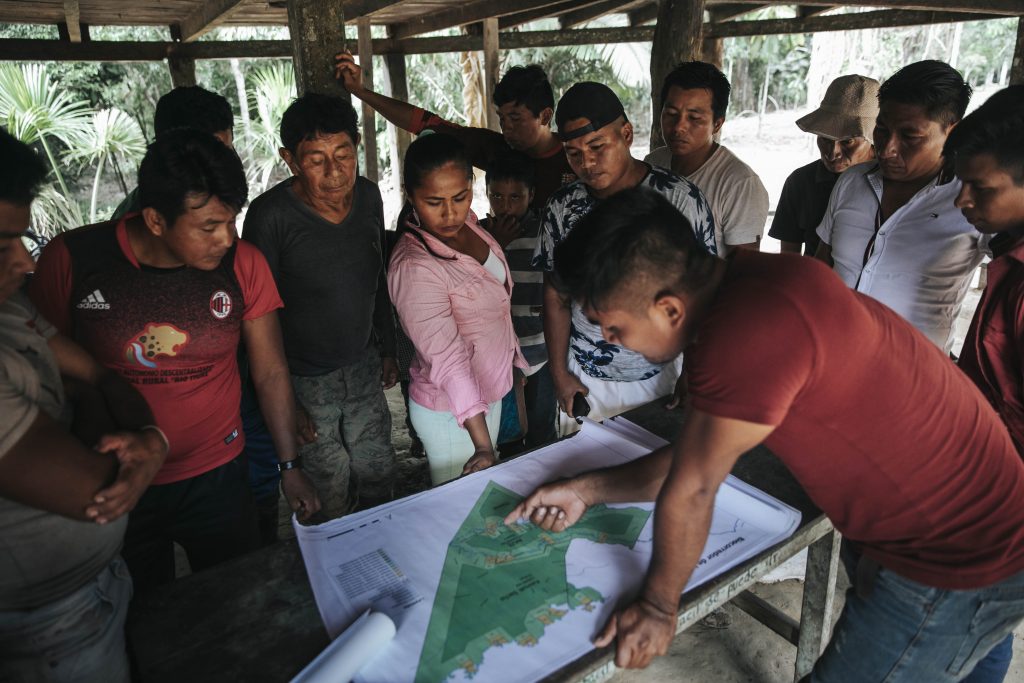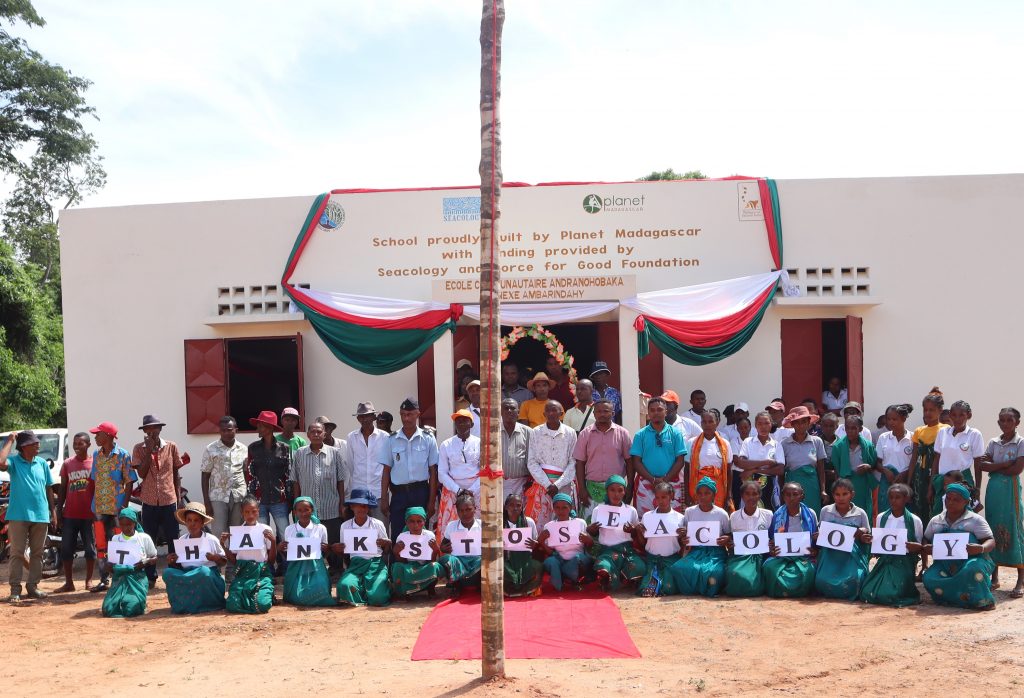- Have The Last Word Against Ransomware with Immutable Backup
- Multi-channel Secure Communication
- Apple's bold idea for no-code apps built with Siri - hype or hope?
- The camera I recommend to most new photographers is not a Nikon or Sony
- I tested LG's new ultrathin 2-in-1, and it handles creative workloads like a dream
Celebrating nature-based solutions this World Environment Day

For World Environment Day we wanted to add to the global celebration by lifting up the stories of several of our Cisco Foundation Climate Impact and Regeneration Portfolio grantee partners working in the realm of Nature-based Solutions (NbS). The good folks at Capital for Climate outline how critical such solutions are for meeting our shared climate goals, and say that when done well, NbS should “deliver climate mitigation, safeguard biological diversity, ensure healthier diets for all, improve food security and create more inclusive and resilient rural economies.”
As you read the stories below you can begin to see a picture developing of what such deeply thoughtful, heartfelt, and well-structured nature-based solutions can look like in practice. They prove that it is indeed possible to deliver on multiple social benefits including the ways outlined by Capital for Climate. We invite you to lift up such stories of active co-creation widely, as we continue to move towards the shared regenerative and inclusive future we all want.
Vesta enhances the ocean’s natural ability to sequester and store CO2
“Vesta‘s climate solution Coastal Carbon Capture (CCC) is a nature-based process that enhances the ocean’s natural ability to sequester and permanently store CO2.
CCC works by adding natural carbon-removing sand to coastal areas & marshlands. As the sand dissolves in seawater, it generates new alkalinity, resulting in the conversion of carbon dioxide for safe and permanent ocean storage.
Within three years, Vesta has been able to move decades of promising but stalled academic research out of the lab and into the real world.
In 2022, Vesta deployed the world’s first Coastal Carbon Capture field pilots in a salt marsh in Massachusetts and on a coastline in New York state.
Since then, we’ve continued to generate positive results on our most important scientific questions.
The Cisco Foundation has played a pivotal role in bringing Coastal Carbon Capture to field trials as the crucial next step to unlock gigatonne scale impact.
Ultimately, CCC has the potential to be a billion-tonne-per year carbon removal solution with co-benefits such as lowering ocean acidity and helping to protect vulnerable coastal communities from sea level rise and erosion. Thanks to the Cisco Foundation’s support, Vesta can continue to develop this process with climate-saving potential.”
PlantVillage makes progress in its quest for a better environment for food production

“PlantVillage has made tremendous strides in its resolve to help farmers in Africa grow more food through planting trees as a climate change mitigation strategy.
With the help of a pool of resources from its partners, including the Cisco Foundation’s $300,000 grant, PlantVillage planted 1.5 million trees in Kenya in just a year.
The planting trees initiative created green job opportunities for 20 youths employed as part of the PlantVillage’s vibrant unit, the ‘Dream Team,’ as well as 275 youths from local communities who participated in setting up and managing 47 nurseries.
PlantVillage Kenya has developed a unique system-change approach using technology from smartphone artificial intelligence found in the PlantVillage Nuru application and satellite data via cloud software.
The trees planted in borders across 12,756 farms reduce water loss from the soils, increase nutrient uptake by the soils, and increase income for farmers through the carbon capture initiative, in which each farm will draw down 3 to 5 metric tons of carbon per year.
‘The carbon market offers a mechanism by which we could scale up climate change adaptation for African farms, resulting in climate change mitigation at scale,’ said David Hughes, founder of PlantVillage, Huck Chair in Global Food Security at Penn State, and director of the USAID Feed the Future Innovation Lab for Current and Emerging Threats to Crops.
‘PlantVillage plans to scale up the program to benefit 200 million farmers, which will pull down 1 gigatonne of carbon (IV) oxide each year. To reach this goal, PlantVillage will draw down 3 million tonnes per day for 365 days a year,’ he added.”
AAC safeguards ancient wildlife migration corridors through trusting relationships with Indigenous communities

“The Andes Amazon Conservancy (AAC) collaborates with 4 Indigenous Nations in Ecuador in an Indigenous-led conservation program that maintains connectivity between the Andes and Amazon and safeguards ancient wildlife migration corridors.
Contiguous habitats that support wildlife migration are vital to preserving and sustaining the region’s increasingly endangered biological diversity.
The effectiveness of AAC’s work is rooted in the trusting relationships we have established with more than 70 Indigenous communities.
We integrate traditional knowledge and modern conservation technology to foster sovereign Indigenous land stewardship and sustainable land conservation while planning for 100 years of human population growth.
Funding from the Cisco Foundation is augmenting this collaborative capacity-building work for ecological connectivity and restoration.
Cisco’s support provides necessary resources to more than 135 Indigenous people who are spearheading this conservation project, provides numerous iterations of GIS maps that reflect the unique conservation choices of each community, and supports the legal documentation and registration of those conservation choices.
The result will be a 175-mile long, 6-million acre Indigenous-planned and implemented eco-cultural corridor and will pave the way for a new model for conservation in an era where 80% of the world’s remaining biodiversity is in Indigenous territories.”
Seacology connects communities to conservation through a unique deal

“Seacology protects island habitats and assists local communities by offering villages a unique deal: if they agree to create a forest or marine reserve, we’ll provide something the village needs, like a schoolhouse, health clinic, water system, etc. Since 1991, we’ve launched 392 projects, working with villages on islands in 68 countries, helping to protect approximately 1.4 million acres of some of the world’s most vulnerable ecosystems.
In 2021, we launched our second largest project to date: The Dominican Republic National Mangrove Initiative. This ambitious project aims to protect the country’s critical mangrove forests through a nationwide mangrove pride campaign while supporting economically vulnerable coastal residents by developing mangrove-related eco-businesses.
In addition, we are engaging coastal youth with a new initiative called Play for the Mangroves, which provides free sports equipment to under-resourced Dominican youth in exchange for their participation in mangrove education and hands-on conservation activities.
Seacology is incredibly grateful to the Cisco Foundation for supporting this initiative. With Cisco’s help, Seacology and our local partner Grupo Jaragua have hosted talks and webinars, funded a mangrove-themed mural project, organized a photography exhibit, visited schools and universities, helped establish 5 new businesses, and distributed baseball and volleyball equipment and mangrove-branded uniforms to youth throughout the country.
Mangroves, so critical to climate change mitigation and adaptation, are becoming a source of pride throughout the country, ensuring their future protection.”
Share:

